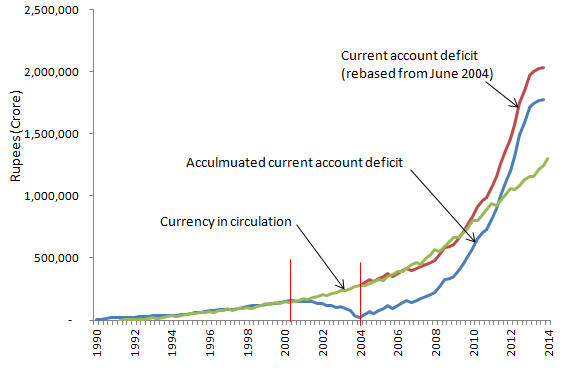Buoyant Economies
India
Currency in circulation and the current account deficit
I have been looking at the Reserve Bank of India data on the money supply and the current account deficit. As shown in Figure 1, we find that the current account deficit is linked to the money supply defined as the growth in currency in circulation up until 2009 when other monetary sources contributed to the current account deficit. Then in 2013/14, India started to control its current account deficit in an effective manner. This appears likely to have involved a move to optimise the the exchange rate.

Figure 1. India - the current account deficit and currency in circulation
The relationship found between the current account deficit and the money supply in Australia, USA, New Zealand and the Philippines is clearly evident in the India. What is particularly interesting is that between the December quarter 2000 and the June quarter 2004, India experienced mostly current account surpluses. The link between the current account deficit and the growth of currency in circulation was broken. This is attributed to the Reserve Bank of India intervening in the foreign exchange market.
To compare the current account deficit and currency in circulation after June 2004, we have rebased the current account deficit figure for June 2004 to equal the figure for the growth in the currency in circulation on that date.
This is good news as it indicates that it is possible to break the link between monetary growth and the current account deficit.
Comments from those familiar with Indian economics are welcome. Send them to leigh@buoyanteconomies.com .
To view the data used to prepare the chart above click here to down load the Excel worksheet.
To read more about this, see the papers on the subject.
Return Australia New Zealand USA the Philippines
Last update: 7 February 2012